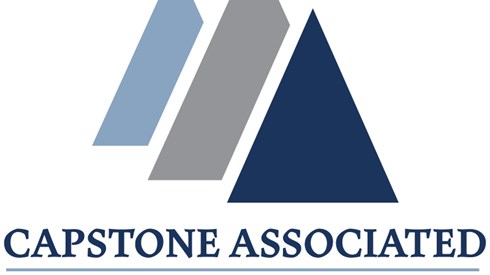Capstone Part 2: Commentary on "Reserve Mechanical" Policy Pricing

July 11, 2018

Editor's Note: In a June 28, 2018, titled "Capstone: 'Does Captive Insurance Exist after the "Reserve" Decision?,'" Houston-based captive manager, Capstone Associated Services, Ltd. (Capstone), provided its first "commentary on insurable risks" surrounding the small insurance company Tax Court case, Reserve Mech. Corp. v. Commissioner, 2018 Tax Ct. Memo LEXIS 87, (T.C. June 18, 2018).
In its second follow-up commentary, Capstone focuses on policy pricing as it continues to raise questions surrounding the Tax Court's decision. Read the full follow-up commentary below.
Disclaimer: The views, interpretations, opinions, findings, and conclusions expressed in the following commentary are those of the author, Capstone Associated Services, Ltd., and not those of International Risk Management Institute, Inc. (IRMI) or Captive.com.
Has the Tax Court Set a Moving Target for Policy Pricing?
Reserve Mechanical Corp. f.k.a. Reserve Casualty Corp. v. Commissioner of Internal Revenue ("Reserve") was decided by the United States Tax Court in an opinion issued by Judge Kathleen Kerrigan (the "Opinion") on June 18, 2018.
In continuing the series on the recent opinion issued in Reserve, this second commentary addresses the issues involving insurance policy pricing and certain related issues raised in the case. See the Opinion and trial transcript.
At trial, Reserve presented the testimony of 10 witnesses, including seven recognized experts. Among them were (i) two independent full Fellows of the Casualty Actuarial Society (FCAS), testifying as to the reasonableness of premiums' pricing, (ii) a nationally recognized Ph.D.-credentialed insurance economist from a top U.S. insurance academic program, testifying on the pooling structure, (iii) a dual credentialed Chartered Property & Casualty Underwriter (CPCU) and Associate of Risk Management (ARM), with 30+ years' experience at international insurance brokerages, who assisted in the development of premiums charged by Reserve and the setting of the premiums; and (iv) the Delaware Director of Captive and Financial Insurance, who is also a lawyer and an experienced insurance regulator having decades of experience. Among the other witnesses was a member of the insurance pooling arrangement's board of directors, himself a former senior vice president of a global risk advisory firm, with decades of relevant insurance industry experience in addition to his being a licensed attorney.
All of Reserve's experts testified that the policies written by Reserve were contracts of insurance as understood in the insurance community. Before the captive's policies were bound and policies issued, an on-site examination of the insureds' facilities was conducted in northeastern Idaho with the report (jointly authored with Capstone) ultimately signed and released by an independent a global risk advisory firm. No commercial policies duplicated the coverages offered through the captive.1
Testifying for the government was only one substantive witness, presented as an expert who was a CPCU, whose testimony on pricing was mainly based on the conjecture that Reserve couldn't possibly have priced premiums "correctly" due to the lack of access to the Commercial Lines Manual (CLM), a pricing manual compiled by the Insurance Services Office, Inc., now part of the for-profit data analytics company, Verisk Analytics, that publishes insurance data and forms for certain standard policies.2 According to the government witness, absent access to this Commercial Lines Manual (one of Verisk Analytic's products), the government's expert claimed that any pricing methodology would require a significant amount of loss data.3
These government contentions were refuted at trial, where Reserve presented (i) the CPCU who coordinated the pricing of Reserve's policies; and (ii) actuaries from two independent firms, both of whom provided expert reports and testified as experts that the premiums Reserve charged were reasonable. The government's witness had no opinion regarding the specific pricing of even a single policy and did not make any determination in his expert report that the premiums charged by Reserve were either overstated or understated.4
As discussed in the "Commentary on Insurable Risks" and as will be supplemented in a following commentary, the unchallenged testimony and evidence established that the policies issued by Reserve to its affiliated insureds were individually underwritten.5
According to the testimony provided by the owner of Reserve, the policies were chosen by Reserve and its insureds to match the shortcomings in the commercial insurance programs principally for the primary insured, Peak Mechanical, which manufactures, rehabs, supplies, maintains, and installs equipment in underground mines, with its products being focused on ventilation and flood control for 5,000 – 8,000+ feet deep, underground mining operations.6 To add to Peak's risk profile, Peak's main facility was located wholly within a major Superfund site.7 The testimony was that one owner had been in an underground mining accident in which his back was broken and still suffers from medical issues as a result of the accident.8 To further add to the risk profile, that owner's father died in an underground mining accident.9 The mentor of Peak's owners even warned of Peak potentially getting caught up in a million dollar litigation settlement (as he did) due to a mining accident caused by another. None of this trial testimony was reflected in the court's opinion.
In the first two years of the captive program, the insured had a covered loss under its "Loss of Major Customer" policy, which was settled and paid at $339,820, net of the deductible.
No captive policies duplicated coverage offered by the commercial policies10 as will be further addressed in a subsequent commentary.
In addition to Reserve's direct written policies, the captive participated (i) in a broad-based pooling program with (by way of example, for 2010) 650 insurance contracts, written to 200 unaffiliated insureds11 and (ii) in a third-party reinsurance assumed program with more than 100,000 other insureds with reinsurance ceded from a commercial carrier,12 all supplementing the diversification of the 11 direct written policies in (by way of example) 2010. Each of the insureds that participated in the broad-based pooling program had individually underwritten and priced policies, with each policy being focused on the insureds' business needs.
Based on the above, the tax court found that no insurance existed anywhere at any time whatsoever in any of these three insurance programs (direct written, pooled, and reinsurance assumed) in which Reserve participated.
The legitimate question presented is, "Does Captive Insurance Exist after the Reserve Decision?"
Arm's-Length Premium Pricing
In addressing pricing of the direct written premiums, the court raises the issue of the policies not being the result of arm's-length negotiations.13 If this were the standard, then captive insurance arrangements—and many business transactions—could not exist given the typical affiliation between the insured and the captive, which in some cases is statutorily required. Similarly, no transfer pricing arrangement would be acceptable between domestic and foreign subsidiaries of a multi-national company if the transfer pricing arrangement was required to be the "result of arm's-length negotiations." Likewise, no entity could deduct rents paid to an affiliate.
In the context of a transfer pricing arrangement, the IRS has authority under IRC section 48214 to allocate items of income and deductions among two or more organizations, trades, or businesses owned or controlled directly or indirectly by the same interests in order to "clearly reflect the income" of any such organizations, trades, or businesses. The IRS has adopted an "arm's length standard" for implementing the clear reflection of income principle for "controlled transactions" under IRC section 482 and has promulgated regulations under section 482 that outline in detail the authorized methods that may be used by a taxpayer to establish that an arm's length price has been charged in connection with a "controlled transaction."15 Instead of considering whether the methods of premium pricing implemented by Reserve satisfied the requirements of section 482, the court rejected the whole of the insurance arrangement, even in the absence of any policy pricing testimony being provided by the government's sole expert witness.
Similar to determining an arm's-length price in a transfer pricing arrangement consistent with the principles of section 482, reasonably justified and supportable premium pricing can be established—as was done by Reserve and is discussed below—even though the parties to the arrangement are affiliated. If the arrangement does not satisfy the standards of section 482, the IRS can reallocate income. Despite the sole government expert declining to provide evidence of pricing, the court chose to disregard all pricing and to ignore the insurance transactions in their entirety.16
Substantial evidence was presented at trial to demonstrate the reasonableness of the policy pricing. And as noted above, the government's sole expert witness declined to testify on pricing.17 The unchallenged testimony presented was that Reserve's insurance manager obtained pricing indications for each policy for each client from an unrelated professional team at a regional managing general agent (MGA), as to what the MGA would charge for the policies had they been offered on behalf of their client insurance companies or syndicates.18 The MGA was an agent of Lloyd's of London with authority to bind insurance coverages for Lloyd's.19 The MGA was presented with exhaustive client background information affecting the exposures (product and service information, major contracts, loss runs, commercial insurance policies, financial information, employee information, etc.). The resulting indications received from the MGA represented pricing derived by this independent expert that reflected premium pricing that the MGA considered to be an arm's length price for each policy underwritten by Reserve to its affiliated insureds. The MGA's pricing indications were used to develop premiums over a range of several hundred policies over many years.20
The unchallenged testimony at trial further demonstrated that once the indications were received by the insurance manager and Reserve, the insurance manager's underwriter, himself a Chartered Property & Casualty Underwriter, would independently review and develop premium rates based on these premium indications. As with the MGA's pricing indications, every policy for every captive was individually-priced according to the risk exposures of the insureds by a Chartered Property and Casualty Underwriter, all along with the MGA providing individual pricing indications on each policy for each captive.21
The position of the sole expert witness for the government was that, absent either a history of losses or access to the Commercial Lines Manual, it was not possible to price premiums.22 However, after being cross examined, this government's witness admitted there were instances in which premiums could be developed without prior loss history.23 In fact, several publications by this government witness espoused views contrary to that of the report and testimony he provided to the court, leading to the court expressing concern about the testimony of the government's sole substantive witness.24 The government's witness' own articles provided support for the position Reserve had taken although such articles were apparently inappropriately excluded from the government's expert report in violation of the U.S. Tax Court Rules of Practice and Procedure, Rule 143(g).25
Further as to policy pricing, the premiums Reserve charged were reviewed by actuaries of national standing. Two independent actuaries, each employed by different organizations and both being Fellows of the Casualty Actuarial Society, reviewed the premiums charged by Reserve for the policies that it issued. Each actuary was accepted as an expert by the court at trial and testified that the premiums charged by Reserve were actuarily supported and within a reasonable range. They also testified that the contracts were policies of insurance as commonly understood. The government provided no actuarial or policy pricing testimony. Even the court appeared to reluctantly recognize that "…Capstone calculated Reserve's premiums using objective criteria and what appear to be actuarial methods…"26
Despite the above, the court appears to have adopted part of the government expert's position on prior losses, taking the position that prior losses are required before a business can purchase insurance.27 This is contrary to even the court's own line of questioning at trial. The court made several inquiries of the government's expert on loss history being a necessary component of insurance. The court explained "years ago no one would have bought tornado insurance in Massachusetts… Now what would you do in Massachusetts about tornado insurance? So, I feel like it's hard to predict exactly what someone might need and they might be thinking ahead that things are going to change and something that might not have been an issue for them might now be one."28 In its own words, the court recognized during trial what is common knowledge in the insurance industry and in business, that the history of one's losses does not define the risks to which one is exposed. The purpose of insurance is to protect against fortuitous future events, without the requirement that the fortuitous event having previously befallen upon the insured.
A subsequent commentary will address the court's interjection of a "business purpose" standard being applied to a for profit insurance company (here Reserve) to write insurance policies.29
Insurance Diversification Via the Pooling Arrangement
Each policy issued by Reserve (and most policies issued by the other pool participants) were jointly underwritten by PoolRe Insurance Corp. ("PoolRe"), an independently-owned entity which operated the pooling arrangement and itself was a regulated insurance company. A member of PoolRe's Board of Directors testified as to PoolRe being administered by Capstone as directed by PoolRe's board of directors. After blending and homogenizing the risks (for example in 2010, at least 650 insurance contracts were written to 200 insureds and reinsured by several dozen captive insurance participants), the pool retroceded its blended risks to dozens of captive insurers in furtherance of their risk diversification efforts.
To be clear, each policy jointly insured by the pool was individually underwritten, resulting in a range of policy pricing for a wide range of clients in differing industries. For example, a business interruption policy written to a company along the Gulf Coast for any given level of coverage would be priced differently from that of a manufacturer located in Idaho.
Nonetheless, the court characterized this pricing methodology as "one-size-fits-all" pricing,30 apparently rejecting the premium blending inherent in a pooling arrangement. In the PoolRe pooling arrangement, an initial pricing methodology, with the premium charged reflecting risk specific factors that were uniquely applicable to a given insured, was used to determine each such captive's premiums prior to any premium blending taking place within the pool.31
In the case of PoolRe, each individual policy for each individual insured is risk-adjusted (distinctly priced) so that the premiums being charged by each captive to its insureds are already risk-adjusted before PoolRe receives premiums for the stop-loss coverage. While the court's opinion in Reserve noted that "PoolRe charges premiums that are a flat percentage of [each captive's] gross direct written premiums," the "flat percentage" is applied against policies which are individually priced so as to be consistently risk adjusted from the time each policy is written.32 Despite such and the testimony of seven experts, the court concluded that PoolRe charged a "one-size-fits-all rate" for all the participants in the quota share arrangement, rejecting the expert's testimony in total. The court rejected both the policy pricing and the contracts as being policies of insurance.33
Noteworthy is that jurisdictionally, PoolRe was not before the court, although the government had information on the pool which it developed during the audit of Reserve and through its related tax-exempt application. Nonetheless, the court seemed to go out of its way to make a finding about non-party PoolRe that it was not a bona fide insurance company, despite the IRS previously issuing 39 favorable rulings to unrelated captives that had previously participated in the same pooling arrangement that was operated by PoolRe. Whether PoolRe was a bona fide insurance company should not have been an issue before the court. The issue before the court was whether Reserve had a sufficient level of risk distribution, which as to Reserve's participation in the pool was answered in the affirmative by a Ph.D.-credentialed insurance economist of national reputation, who was recognized as an expert by the court and who studied the pooling arrangement at issue in depth. This issue was unchallenged in any other testimony before the court. Somehow, the court was of the opinion that a pooling arrangement had to be conducted through an insurance company intermediary.
Consistent with the testimony and evidence presented at trial, PoolRe retroceded its premiums from the stop loss endorsement as a quota share to the pool participants, which were many dozens of captive insurance companies owned by the affiliates of the 200 (for 2010) individual insureds. Of course, the pooling blends and homogenizes independent risks before ceding a blended mix of risks, with the participants' objective being to reduce exposure to individual risk events.
The stop loss portion of the premiums received by the pool from the individual insureds was ceded to the individual stop loss insurers (the captive participants) as a quota share premium and was priced based upon an actuarial analysis that was performed by yet another actuarial fellow, which was unchallenged.34
The court considered this pooling arrangement unacceptable and ruled that this traditional pooling arrangement was a "one-size-fits-all" rate for all. The court ruled that the facts of the PoolRe quota share arrangement were similar to the facts presented in the Pan American quota share arrangement in the case of Avrahami v. Commissioner35, inappropriately shoehorning its interpretation of Reserve facts to fit with the much different facts that were actually present in Avrahami.
In Avrahami, which was handed down following the Reserve trial, but before the Reserve opinion was entered, the tax court expressed concern about a "one-size-fits-all" rate being charged for all insureds for the single pooled policy covering terrorism, which was priced the same for all insureds regardless of the business of the insureds, their size, or their location. There was no individual underwriting of this policy for any of the insureds. The Avrahami facts were far removed from those presented in Reserve. In Avrahami, according to the court, Pan American charged the same rate for terrorism risk insurance to all its participants, regardless of their geographic location or other risk specific factors. In other words, the premiums being received by the Avrahami's captive (Feedback) had the exact same pricing for the Avrahami's insureds as was used for each and every other insured that was participating in the Pan American pool, regardless of the risk specific factors that were applicable to each insured. That is, the premium charged for each insured's terrorism policy was the exact same percentage of the policy limit, regardless of whether any other duplicative coverages existed, and regardless of whether the insureds' physical plant or location was Midtown Manhattan or (as was the case with the Avrahamis) suburban Phoenix.
In contrast to the Pan American pooling arrangement present in Avrahami, the PoolRe pooling arrangement present in Reserve involved the pooling of numerous different risks (rather than just pooling one terrorism policy), and, as previously discussed, the rates charged by each captive to its affiliated insureds were price risk-adjusted through a combination of (i) Reserve receiving pricing indications from the MGA, (ii) the insurance manager's underwriters developing base insurance rates from the MGA's pricing indications, (iii) having the insurance manager's underwriters, themselves CPCUs, modify those base rates to the particular insured based on the underwriter's experience with factors unique to each insured (e.g., the risk posture of the insured, its size, physical location, number of employees, industry, etc.) which is inherent in any insurance arrangement; and (iv) having two independent actuaries testify on the reasonableness of the actual pricing of Reserve's individual policies.36 There was no "one-size-fits-all" rate being charged by PoolRe because each participating captive's premiums were already price risk-adjusted as part of the underwriting process and priced on a consistent basis as part of the underwriting process when the policies were first bound.
Additionally, at trial, as referenced above, renowned insurance economist Dr. Neil Doherty, who was recognized as an expert by the court, testified that the contractual arrangement between Reserve and PoolRe was insurance as commonly understood and provided a significant level of risk distribution to Reserve. Following his detailed review of hundreds of pages of documentation regarding the pooling arrangement,37 Dr. Doherty testified that risk pooling arrangements like that of PoolRe are common in the insurance industry and that the particular arrangement between Reserve and PoolRe provided a level of risk diversification that "sailed" past that found in Harper, in which case he had previously testified and was cited by the court in that opinion.38 Harper is one the key captive insurance cases of the last thirty years decided by the U.S. Ninth Circuit Court of Appeals. See also a recent commentary by reinsurance expert, Oliver Schofield, in Captive Review, commenting on the PoolRe pooling arrangement as being an effective reinsurance structure for achieving risk distribution. Mr. Schofield explains in this article that captive reinsurance is well established as an effective way of ensuring that captives do not "end up in the mortuary chapel" and emphasizes that the reinsurance structure for a captive "should be [recognized] as being critical to a captive's longevity."39
Further to the point of risk diversification provided by the pooling arrangement, the court took testimony from a total of three actuaries40, a CPA specializing in insurance reporting41, and the Delaware captive insurance regulator42, all of whom were recognized as experts by the court and all of whom provided testimony on behalf of Reserve that it was a bona fide insurance company and that the arrangement between Reserve, PoolRe, and the named insureds was insurance in the commonly accepted sense within their areas of expertise.
Another aspect of Reserve's insurance program was the assumption of premiums related to reinsurance assumed. The court took the position that these contracts were not bona fide insurance because any actual risk that PoolRe had in connection with the reinsurance was de minimis without explaining what the court meant by this comment.43 The Court also seemed to suggest that Reserve should have produced copies of the 100,000+ underlying contractual agreements that were ceded from the direct writer of the insurance to PoolRe, which suggests that the court sui sponte concluded that Lyndon Insurance was ceding facultative (rather than treaty) reinsurance under the reinsurance treaty at issue.44 Unchallenged testimony at trial showed that the risks associated with this insurance program were ceded from the direct writer of the insurance, Lyndon, itself a commercial insurer and part of a publicly-held group, ultimately to PoolRe and onto Reserve.45 The actuary testifying, a Fellow of the Society of Actuaries, was recognized by the court as an expert and testified that the risk assumed under the reinsurance coinsurance contracts were real and that losses were paid. The uncontested testimony at trial was that the third-party reinsurance assumed by Reserve was bona fide insurance, which the court nonetheless rejected.
It was surprising, to say the least, that the tax court found that no insurance existed anywhere at any time whatsoever in any of Reserve's three insurance programs (direct written, pooled, and reinsurance assumed). After the Reserve decision, what must be shown for a captive's policy pricing to be respected for federal income tax purposes? What evidence must be presented to a court to satisfy the reasonableness of a captive's policy pricing? What is the basis for a court requiring prior losses in order to recognize a contract as "insurance" for federal income tax purposes? Does the requirement of past losses make business sense in light of coverages for business interruption, and pollution coverage, among others? How can a pollution liability policy issued by an insurer to a manufacturer physically located within a Superfund site not be a contract of insurance for tax purposes? Finally, how must a pooling arrangement be structured for a captive to be able to achieve risk distribution if the court is unwilling to accept longstanding industry standard practices as to how pooling arrangements are structured? Simply put, is the U.S. Tax Court correct in concluding that everything is wrong?
It would appear that the court has adopted a moving target both for determining if an arrangement qualifies as insurance for tax purposes and with respect to how insurance contracts should be priced.
This commentary is reproduced by Captive.com with permission of Capstone Associated Services, Ltd.
July 11, 2018





